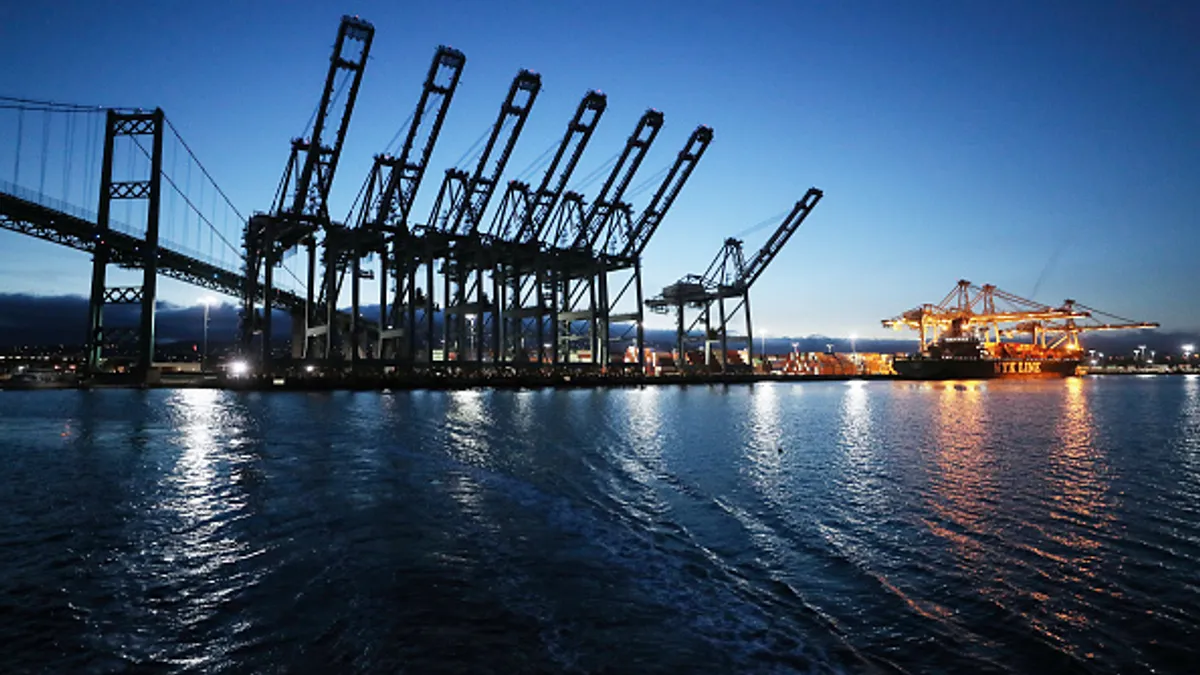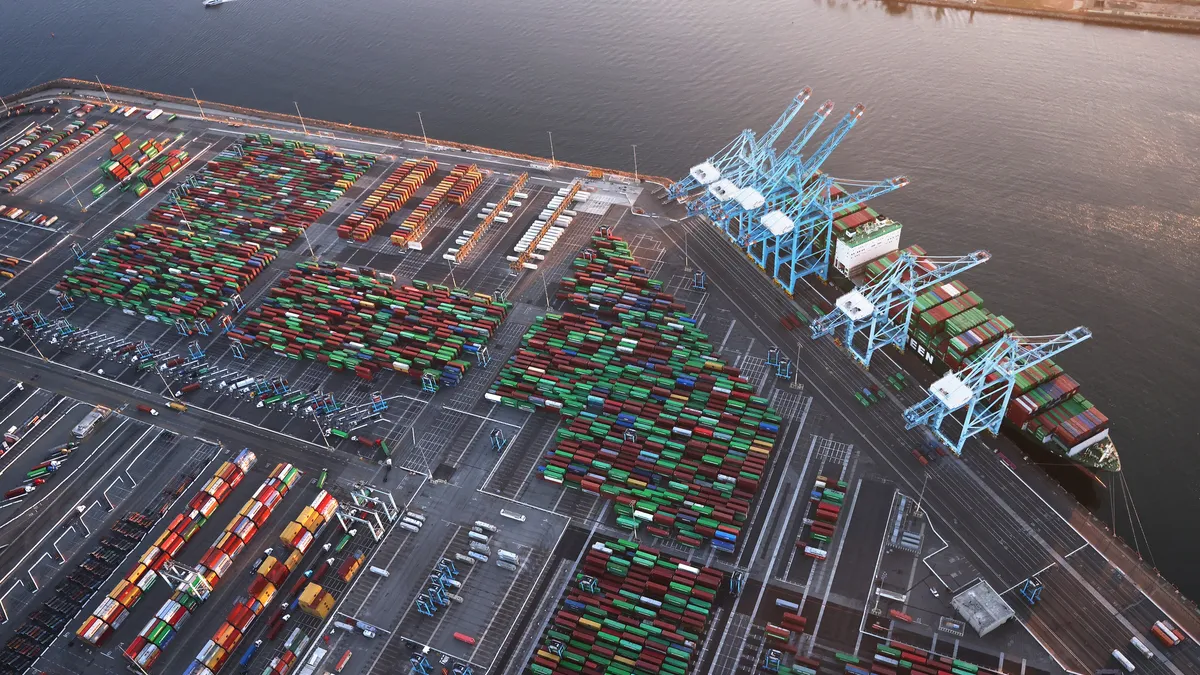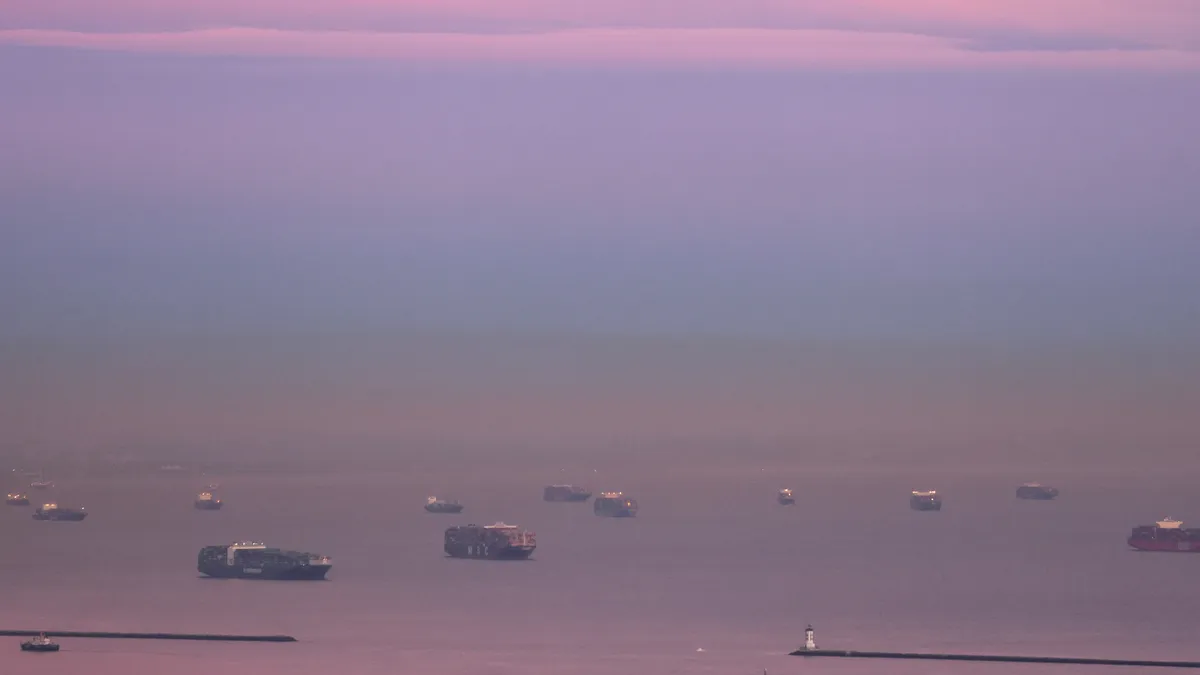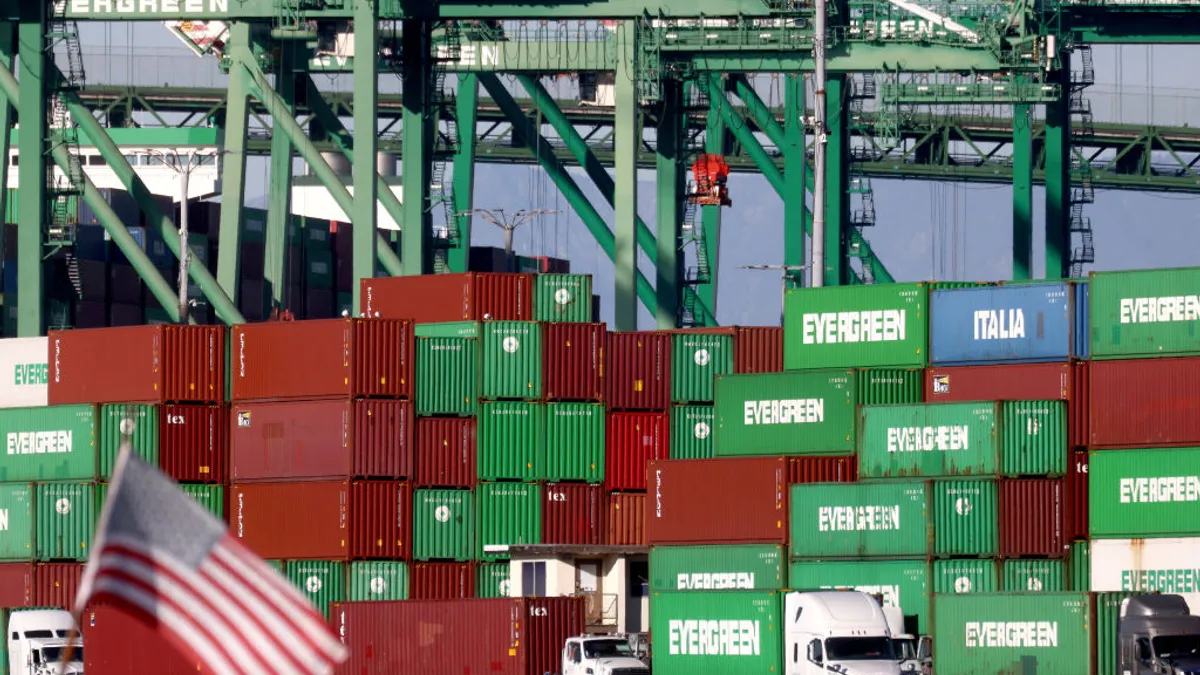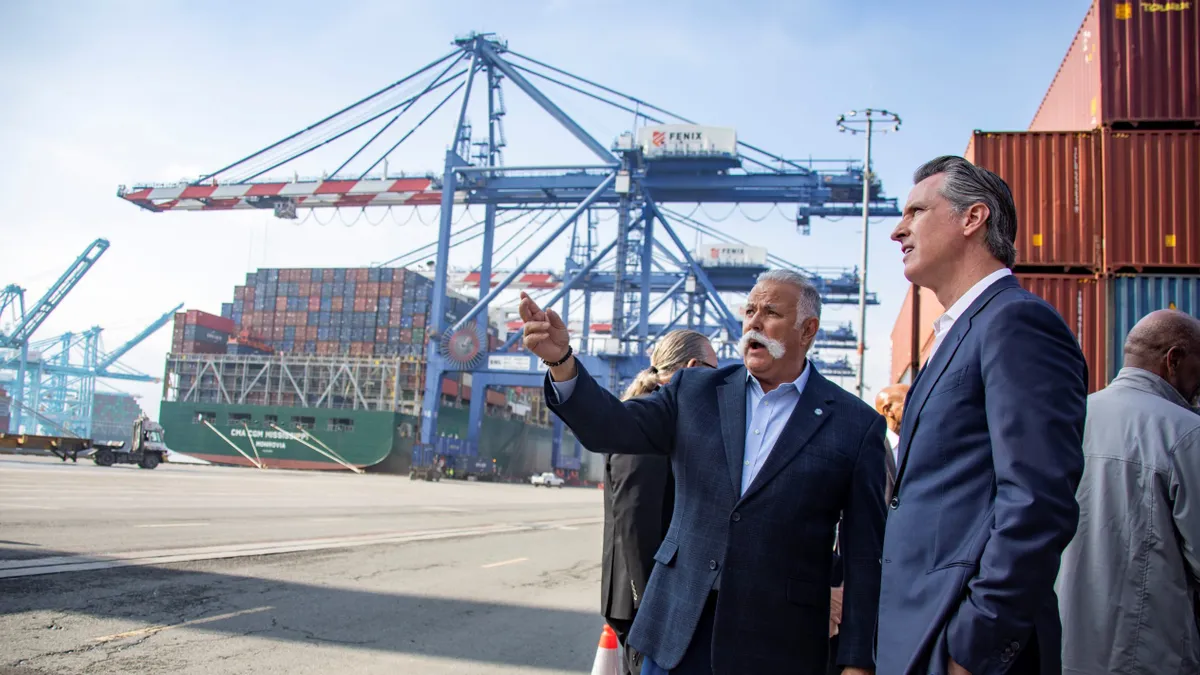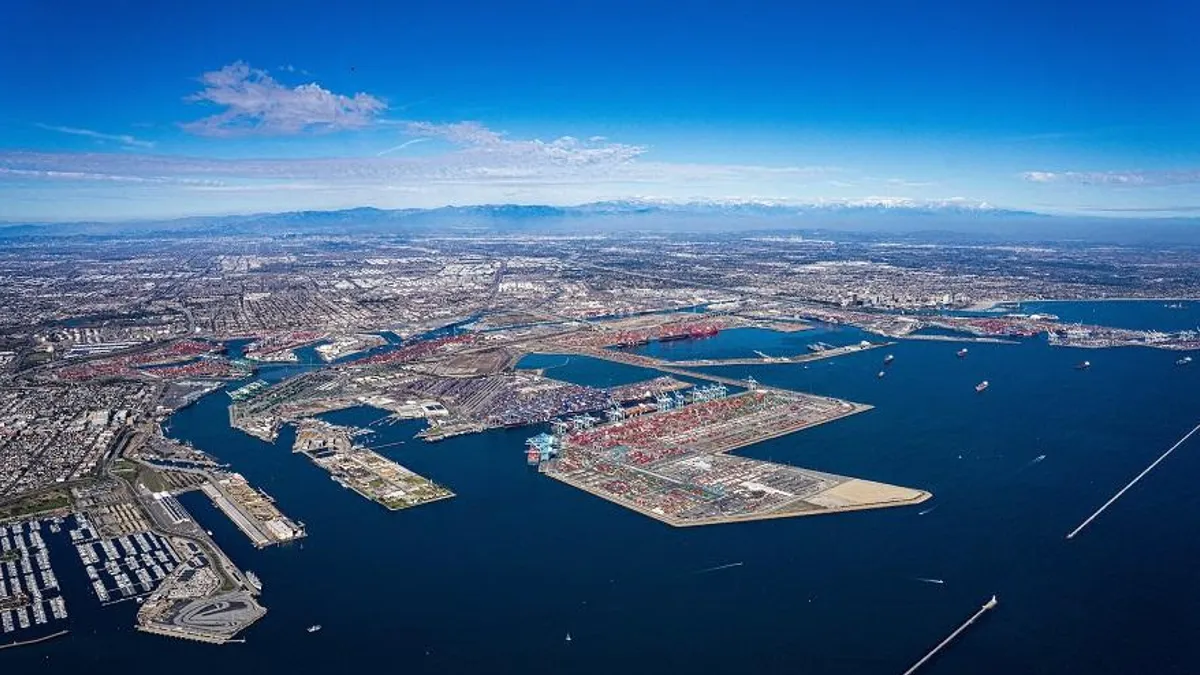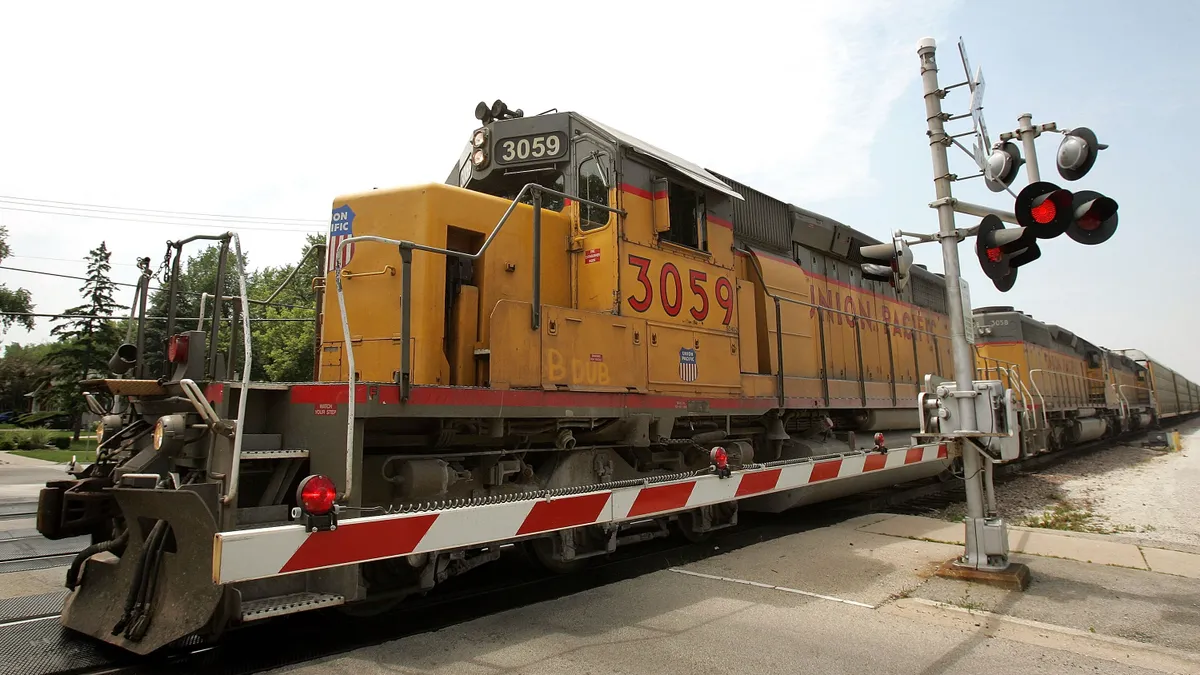Dive Brief:
- Record volumes have persuaded port officials to expand hours at the ports of Los Angeles and Long Beach in California, according to an announcement Friday. The San Pedro Bay ports will expand hours during which trucks can pick up and return containers.
- Long Beach will take the first step toward a "24/7 supply chain by maximizing nighttime operations," while the Port of Los Angeles expands weekend operating gate hours, the announcement said. The latter is part of a program called "Accelerate Cargo LA," which will work as a pilot to ensure that gate availability meets cargo demands.
- Long Beach and Los Angeles port officials said they have also called on marine terminal operators to use all available gate hours, especially night gates, "to reduce congestion and maximize cargo throughput capacity."
Dive Insight:
The ports' latest tweaks to their hours come after months of congestion and surging consumer demand. Port bottlenecks have directly impacted trucking firms, facing equipment detention and a shortage of drayage drivers.
Long Beach reported it handled 807,704 total 20-foot-equivalent units in August, up 11.3% YoY and up 21.6% from August 2019. This month, the port began offering information, alerts and updates about traffic conditions via text message to drivers.
The Port of Los Angeles processed 954,377 TEUs in August, which almost hit August 2020's record of 961,833 TEUs. In the first eight months of this year, overall cargo volume is 7,273,053 TEUs, which is a 30% YoY increase.
The two California ports are reacting to a post-pandemic problem they have had with container ships anchoring near the Los Angeles and Long Beach ports. According to Marine Exchange of Southern California, there were 69 container ships at anchor or drift areas and 30 at berths at the ports as of Tuesday morning.
The measures taken by the San Pedro Bay ports officials are likely in response to growing observations that the bottlenecks could severely disrupt the supply chain and then the North American economy. Russell estimated disruption of up to $90 billion worth of goods if congestion drags into October.
Loads moved from Los Angeles to Stockton, California, were up 35% for the week ending Sept. 19, according to Dean Croke, DAT principal analyst. Stockton is a large warehouse market where many shippers send e-commerce goods, said Croke.
The L.A.-to-Stockton TL spot price is up to $4.44 per mile, Croke said, compared to $3.14 per mile a year before, a 41% leap.
"It's a new 12-month record on that big e-commerce lane," said Croke.
But shippers are also sending the imported goods on long trips from Los Angeles County because of difficulty getting it on rail, Croke said. TL volume out of Los Angeles to Atlanta was up 22%, Chicago was up 23% and Dallas was up 24%, Croke said.
The higher shipping costs will likely lead to higher consumer prices as the nation heads into the holiday season, said Croke.
"It's not going to end before Christmas," said Croke, speaking of port congestion. "The backlog, the congestion. It's going to take them a long time to get 70 container ships cleared ... and 17 container ships arrive in Los Angeles every three days on average."
This story was first published in our sister publication, Transport Dive. Sign up here.


